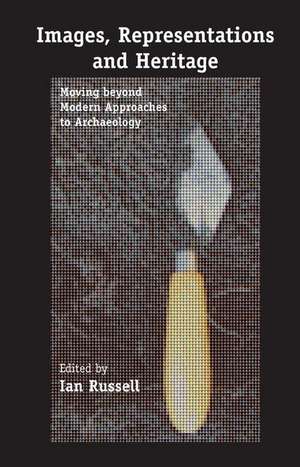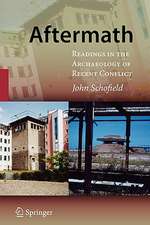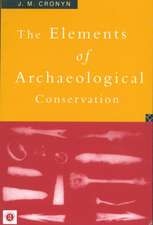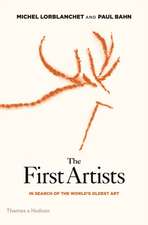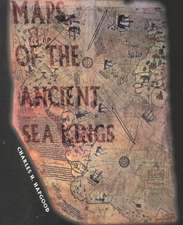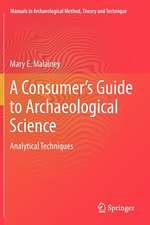Images, Representations and Heritage: Moving beyond Modern Approaches to Archaeology
Editat de Ian Russellen Limba Engleză Hardback – 21 iun 2006
Participation in the public’s modern interest in archaeology, however, puts archaeology at risk. The growing role of archaeology and heritage within the economics of tourism, has led to a commodification of archaeological knowledge and experience for consumption. This volume begins a discourse on the implications of performing archaeology in a world dominated by modern trends of mass production, mass replication and representation of cultural forms and mass consumption of images of the past. The contributors explore to what extent we are experiencing a crisis of representation of the past due to contemporary consumption of mass-produced replicas, simulations, images and experiences of the past.
To work through this crisis the contributors in this volume are exploring opportunities for development within archaeological thought and practice. Their arguments illustrate a move towards active, participatory and poetic archaeological thought and practice. Rather than focusing on what is produced through process (artifacts, monuments, interpretive centers, etc.), they are concerned with what they are doing, about taking part, about participating reflexively in the tradition of understanding and expressing understanding of the past. Thisvolume does not conjure up romantic beliefs about the project of archaeology, but rather, it signals a fundamental revision of archaeology - not what it is, but what it can do.
| Toate formatele și edițiile | Preț | Express |
|---|---|---|
| Paperback (1) | 395.09 lei 6-8 săpt. | |
| Springer Us – 29 oct 2010 | 395.09 lei 6-8 săpt. | |
| Hardback (1) | 402.56 lei 6-8 săpt. | |
| Springer Us – 21 iun 2006 | 402.56 lei 6-8 săpt. |
Preț: 402.56 lei
Nou
Puncte Express: 604
Preț estimativ în valută:
77.03€ • 82.37$ • 64.23£
77.03€ • 82.37$ • 64.23£
Carte tipărită la comandă
Livrare economică 18 aprilie-02 mai
Preluare comenzi: 021 569.72.76
Specificații
ISBN-13: 9780387322155
ISBN-10: 0387322159
Pagini: 390
Ilustrații: XXIV, 390 p.
Dimensiuni: 156 x 235 x 24 mm
Greutate: 0.76 kg
Ediția:2006
Editura: Springer Us
Colecția Springer
Locul publicării:New York, NY, United States
ISBN-10: 0387322159
Pagini: 390
Ilustrații: XXIV, 390 p.
Dimensiuni: 156 x 235 x 24 mm
Greutate: 0.76 kg
Ediția:2006
Editura: Springer Us
Colecția Springer
Locul publicării:New York, NY, United States
Public țintă
ResearchCuprins
Realisms and Realities.- Introductions.- Archaeologically Imagined Communities.- Archaeological Tourism as a Signpost to National Identity.- Irish Images on English Goods in the American Market.- Representing Spirit.- Archaeologies and Opportunities.- The Role of Archaeology in Presenting the Past to the Public.- Assessing the Role of Digital Technologies for the Development of Cultrual Resources as Socioeconomic Assets.- Experiencing Archaeology in the Dream Society.- The Crisis of Representation of the Past.- Towards Archaeologies of Memories of the Past and Planning Futures.- Collective Memory and the Museum.- The Simulacra and Simulations of Irish Neolithic Passage Tombs.- Poetic Archaeologies and Moving Beyond Modernity.- Practice Makes Perfect.- Bog Bodies and Bog Lands.- Who Wants to Visit a Cultural Heritage Site?.- Concluding Remarks.
Recenzii
From the reviews:
'This collection of essays takes our understanding of the public role of archaeology forward, by placing themes of representation, tourism and the heritage industry into the contexts of contemporary debates on the character of modern society. Where public archaeology is often blandly portrayed as a matter of the management of a cultural resource, Russell's volume presents the traces of the past as active in the present, recruited in the formation of multiple identities, circulated in media and the arts, and formative of dreams and fantasies. This is a book that will be of interest to anyone concerned with the place of the past in today's world, not simply archaeologists and heritage professionals.'
Professor Julian Thomas, School of Arts, Histories and Cultures, University of Manchester
"Reaching for some new ways to approach archaeology, editor Russell brings together 12 contributions scholars based in Europe and the US who come from diverse disciplines including art, archaeology, architecture, history, visual culture, classics, and regional planning.... The subject index affords access to the specifics of this wide-ranging exploration." (Reference and Research Book News, November 2006)
"One of the intriguing elements of this book is the opportunity at the end of each section for authors to respond to their articles and the articles of others. This gives a congruency to chapters where seemingly different topics of museum design, Irish passage tombs, and bog bodies can be seen as connected under some broad intellectual thread of understanding. Russell did well as the editor of this volume acting as both a guide and a narrator connecting dots and helping explain themes, allowing chapter authors to do what they do best, tell us about their topics. In this book you will find no mention of flaked stone, Egyptian mummies, or Meso-American temples, though Stonehenge is mentioned. If you are looking for a good book from a distinctly post-modern approach on the future of archaeology, you should look no further." (Historical Archaeology)
"The editor, Ian Russell, has obviously performed a considerable feat in creating a forum for debate and marshalling these articles and commentaries. He also provides a very thorough Introduction and Conclusion tying the volume together. … this is an important book, not only for those interested in public archaeology and heritage, but for anyone involved in the production of images on the past." (Siân Jones, Journal of Anthropological Research, Vol. 64, 2008)
'This collection of essays takes our understanding of the public role of archaeology forward, by placing themes of representation, tourism and the heritage industry into the contexts of contemporary debates on the character of modern society. Where public archaeology is often blandly portrayed as a matter of the management of a cultural resource, Russell's volume presents the traces of the past as active in the present, recruited in the formation of multiple identities, circulated in media and the arts, and formative of dreams and fantasies. This is a book that will be of interest to anyone concerned with the place of the past in today's world, not simply archaeologists and heritage professionals.'
Professor Julian Thomas, School of Arts, Histories and Cultures, University of Manchester
"Reaching for some new ways to approach archaeology, editor Russell brings together 12 contributions scholars based in Europe and the US who come from diverse disciplines including art, archaeology, architecture, history, visual culture, classics, and regional planning.... The subject index affords access to the specifics of this wide-ranging exploration." (Reference and Research Book News, November 2006)
"One of the intriguing elements of this book is the opportunity at the end of each section for authors to respond to their articles and the articles of others. This gives a congruency to chapters where seemingly different topics of museum design, Irish passage tombs, and bog bodies can be seen as connected under some broad intellectual thread of understanding. Russell did well as the editor of this volume acting as both a guide and a narrator connecting dots and helping explain themes, allowing chapter authors to do what they do best, tell us about their topics. In this book you will find no mention of flaked stone, Egyptian mummies, or Meso-American temples, though Stonehenge is mentioned. If you are looking for a good book from a distinctly post-modern approach on the future of archaeology, you should look no further." (Historical Archaeology)
"The editor, Ian Russell, has obviously performed a considerable feat in creating a forum for debate and marshalling these articles and commentaries. He also provides a very thorough Introduction and Conclusion tying the volume together. … this is an important book, not only for those interested in public archaeology and heritage, but for anyone involved in the production of images on the past." (Siân Jones, Journal of Anthropological Research, Vol. 64, 2008)
Textul de pe ultima copertă
Recent archaeological theory has show that images of the past have carried a particularly strong resonance within modern social groups. This volume explores the immeasurable impact that the phenomenon of archaeology has had on the representation of the past in the modern world. Modern society’s ‘archaeological imagination’ conceives of archaeology as a producer of images of the past which become representations of modern group identities. If archaeology is utilized by public groups to construct and represent identities, then what are archaeologists to do with that public? The very fact that the public is interested in the past and in archaeological research is an opportunity for archaeology to engage that public.
Participation in the public’s modern interest in archaeology, however, puts archaeology at risk. The growing role of archaeology and heritage within the economics of tourism, has led to a commodification of archaeological knowledge and experience for consumption. This volume begins a discourse on the implications of performing archaeology in a world dominated by modern trends of mass production, mass replication and representation of cultural forms and mass consumption of images of the past. The contributors explore to what extent we are experiencing a crisis of representation of the past due to contemporary consumption of mass-produced replicas, simulations, images and experiences of the past.
To work through this crisis the contributors in this volume are exploring opportunities for development within archaeological thought and practice. Their arguments illustrate a move towards active, participatory and poetic archaeological thought and practice. Rather than focusing on what is produced through process (artifacts, monuments, interpretive centers, etc.), they are concerned with what they are doing, about taking part, about participating reflexively in the tradition of understanding and expressingunderstanding of the past. This volume does not conjure up romantic beliefs about the project of archaeology, but rather, it signals a fundamental revision of archaeology – not what it is, but what it can do.
Participation in the public’s modern interest in archaeology, however, puts archaeology at risk. The growing role of archaeology and heritage within the economics of tourism, has led to a commodification of archaeological knowledge and experience for consumption. This volume begins a discourse on the implications of performing archaeology in a world dominated by modern trends of mass production, mass replication and representation of cultural forms and mass consumption of images of the past. The contributors explore to what extent we are experiencing a crisis of representation of the past due to contemporary consumption of mass-produced replicas, simulations, images and experiences of the past.
To work through this crisis the contributors in this volume are exploring opportunities for development within archaeological thought and practice. Their arguments illustrate a move towards active, participatory and poetic archaeological thought and practice. Rather than focusing on what is produced through process (artifacts, monuments, interpretive centers, etc.), they are concerned with what they are doing, about taking part, about participating reflexively in the tradition of understanding and expressingunderstanding of the past. This volume does not conjure up romantic beliefs about the project of archaeology, but rather, it signals a fundamental revision of archaeology – not what it is, but what it can do.
Caracteristici
Investigates the relationship between archaeology and the heritage and tourism industries along with the implications of such a relationship in a world dominated by mass production, replication, simulation and consumption Addresses the question: to what extent are archaeologists and heritage professionals encouraging the proliferation of hyper-realities in the form of "authentic" tourism and heritage experiences Includes supplementary material: sn.pub/extras
